Michigan vineyard pest scouting report – July 3, 2019
Target dates for grape berry moth controls are approaching and there is significant downy disease pressure in southwest Michigan vineyards.

This is the third integrated pest management (IPM) scouting report we are sending out for 2019 based on visits to multiple juice and wine grape vineyards. This report will be available every other Wednesday throughout the growing season.
Insect report
In Berrien and Van Buren counties, most grapes are at the buckshot berry growth stage. The first generation of grape berry moth larvae have been found in low numbers starting to feed on clusters, usually inside webbing that provides some protection from rain and predator insects. Previous Michigan State University research in juice grapes has not shown a link between control of first generation grape berry moth and infestation levels at harvest; however, it is important to target the upcoming second generation of this pest. If grape berry moth infestations have been a challenge in previous years or if early-season infestation was observed, controlling the second generation of grape berry moth will help reduce berry splitting, sour rot development, etc.
The grape berry moth degree day model on MSU Enviroweather helps growers with the timing for this management by identifying when egglaying by grape berry moth will start. This is predicted at 810 growing degree days (GDD) base 50 degrees Fahrenheit after bloom of wild grapes. MSU Extension staff have been looking for this phenological marker and saw wild grape bloom occur in the following dates at the main grape production regions:
|
County |
Wild grape bloom |
|---|---|
|
Berrien |
May 31 |
|
Van Buren |
June 1 |
|
Allegan |
June 4 |
|
Leelanau |
June 18 |
Current projections for GDD accumulation indicate that 810 GDD will occur on July 7 for southern Berrien County and July 8 for Van Buren County, so growers in the southwestern region of the state would need to make applications in the next week to 10 days. Wild grape bloom and growing degree day accumulation projections are later for the northern region, and so the timing in that region will be delayed until mid to late July. If you noted the timing of wild grape bloom on your own farm, you can use the Enviroweather grape berry moth model to have a more precise prediction for control dates for second generation grape berry moth.
Note that this model predicts the start of egglaying by this pest, so long-lasting insecticides that are active on eggs and young larvae such as Intrepid 2F should be timed for 810 GDD. Most other products target the larvae so they should be delayed by an additional 100 GDD to 910 GDD for better targeting of egg hatch.
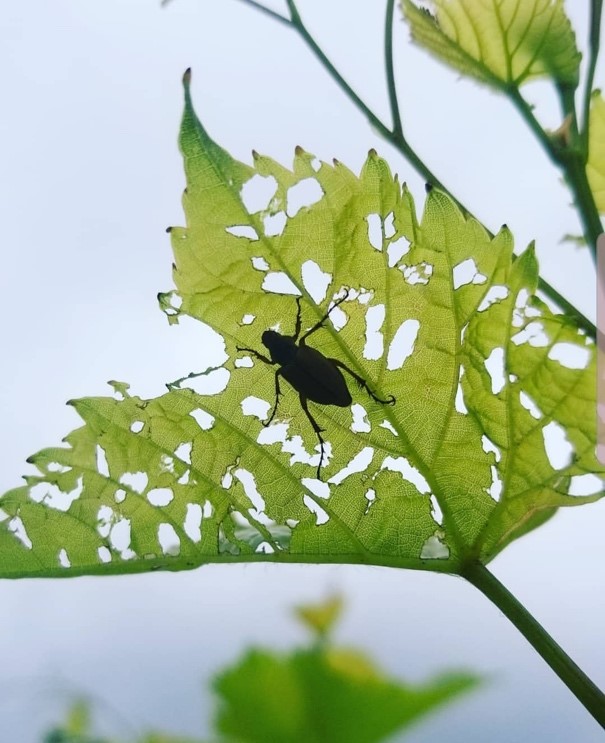
Adult rose chafer emergence has occurred across the state and leaf damage by this pest has been observed. In the northwest region, newly planted grapevines are being hit extra hard by this insect feeding (see photos). Additionally, low levels of Japanese beetle adults and feeding damage have recently been observed in Berrien County and numbers of this pest will likely increase over the coming weeks, with plenty of moist soil and grass available for their preferred egglaying sites.
Damage from grape tumid gallmaker continues to be observed in vineyards across the state. Larvae of this pest feed on plant tissues which respond by forming a protective gall around it. Damage has been observed on clusters and leaves. Remove them by hand and destroy them if found. The rapidly expanding shoots typically grow out of this damage during the shoot expansion phase of vine growth and most growers can tolerate low levels of damage, although reports this year have been higher than most years. Thoroughly scout before assuming this insect is a real problem pest worth spending time and money controlling. Also, note the infested areas to focus your scouting in 2020.
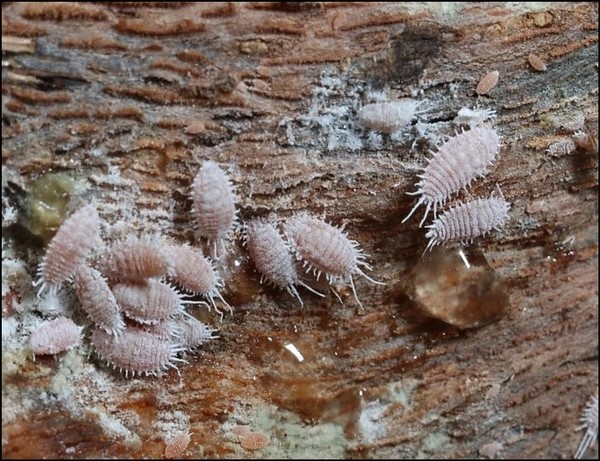
Mealybug adults have been reported on vine trunks in the past week. Mealybugs are most commonly found in the crevices of the wood or later in the season on berries near the trunk. Ants are often associated with mealybugs, so if you see many ants on a vine it may be an indication of a mealybug infestation. This can be confirmed by peeling back some bark off the trunk of the vine to see if these small mealybugs are present (see photo). Damage from these insects can occur when their honeydew drops onto nearby leaves and fruit. The honeydew acts as a substrate for sooty molds that can spoil fruit quality. This insect is also a primary vector for the grapevine leafroll virus.
Disease report
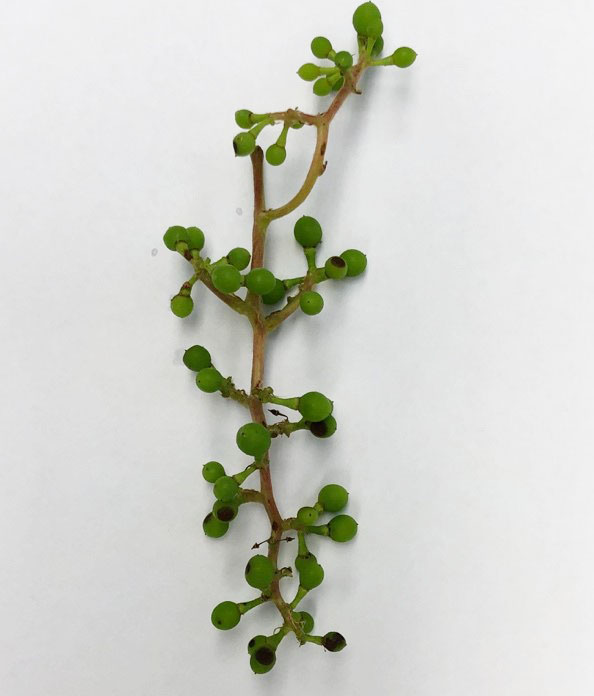
For southwest Michigan, both Berrien and Van Buren County grapes were scouted July 1 and 2 and several diseases were observed. In northwest Michigan, very little disease was observed on both the Leelanau and Old Mission scouting locations; these locations were also scouted July 1.
Frequent rain events in 2019 have caused a very high disease pressure situation this year in southwest Michigan leading to a lot of infections of shoots and berries. During this time of year, be concerned about controlling phomopsis, black rot, powdery mildew and downy mildew.
We observed symptoms of black rot and phomopsis on Niagara grapes in Lawton, Michigan (see photos). Black rot appears as small, light brown, roughly circular spots on leaves and appears as dark circular lesions on developing berries. Phomopsis will appear as numerous small lesions on both the leaves and shoots of the plant and as browning and decay on fruit.
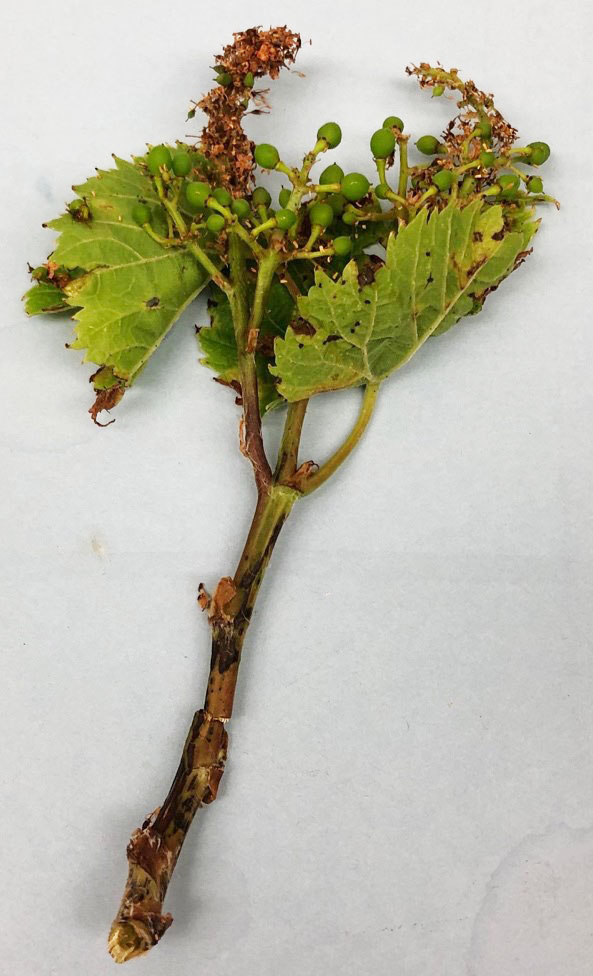
Black rot and phomopsis are primarily controlled by removing primary inoculum in the early season (e.g., removing mummies and destroying pruning wood), early season dormant fungicide applications (e.g., Sulforix), EBDC fungicide applications (e.g., Manzate Max) and in-season sprays of synthetic fungicides (e.g., fungicides with FRAC codes 3, 7 and 11). If at this time you find a lot of phomopsis lesions on the leaves and canes, infection pressure will be high for the fruit also. It is not too late to apply fungicides for cluster protection from phomopsis.
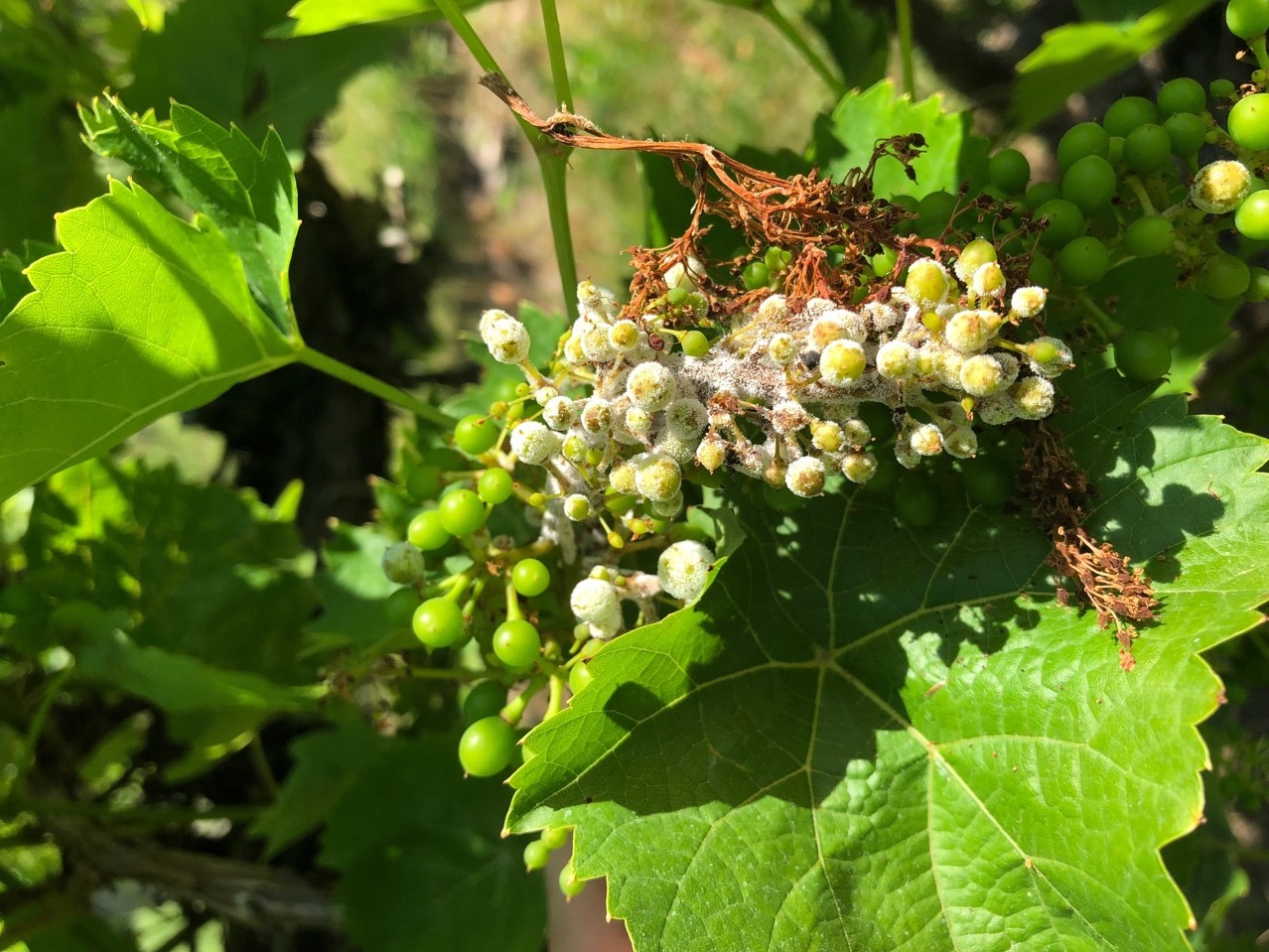
We also observed significant downy mildew disease pressure and found downy mildew at all locations on both leaves and developing berries (see photos). The causal pathogen (Plasmopara viticola) overwinters as microscopic oospores in leaf debris on the vineyard floor which, in the spring, serve as the primary inoculum and germinate in water to form sporangia. When sporangia encounter free water, zoospores are then released and are transferred by rain splash to the surface of the grapevine.
The pathogen can infect all green tissues of the grapevine and is expressed as yellowish-green lesions on the upper leaf surface at about one to two weeks following infection. As lesions expand, the affected areas turn brown and necrotic. On lower leaf surface, patches of gray downy growth are usually directly beneath the yellowish-green spots observed on the upper leaf surface. Downy cluster infection is expressed as white to gray sporulation on the berries.
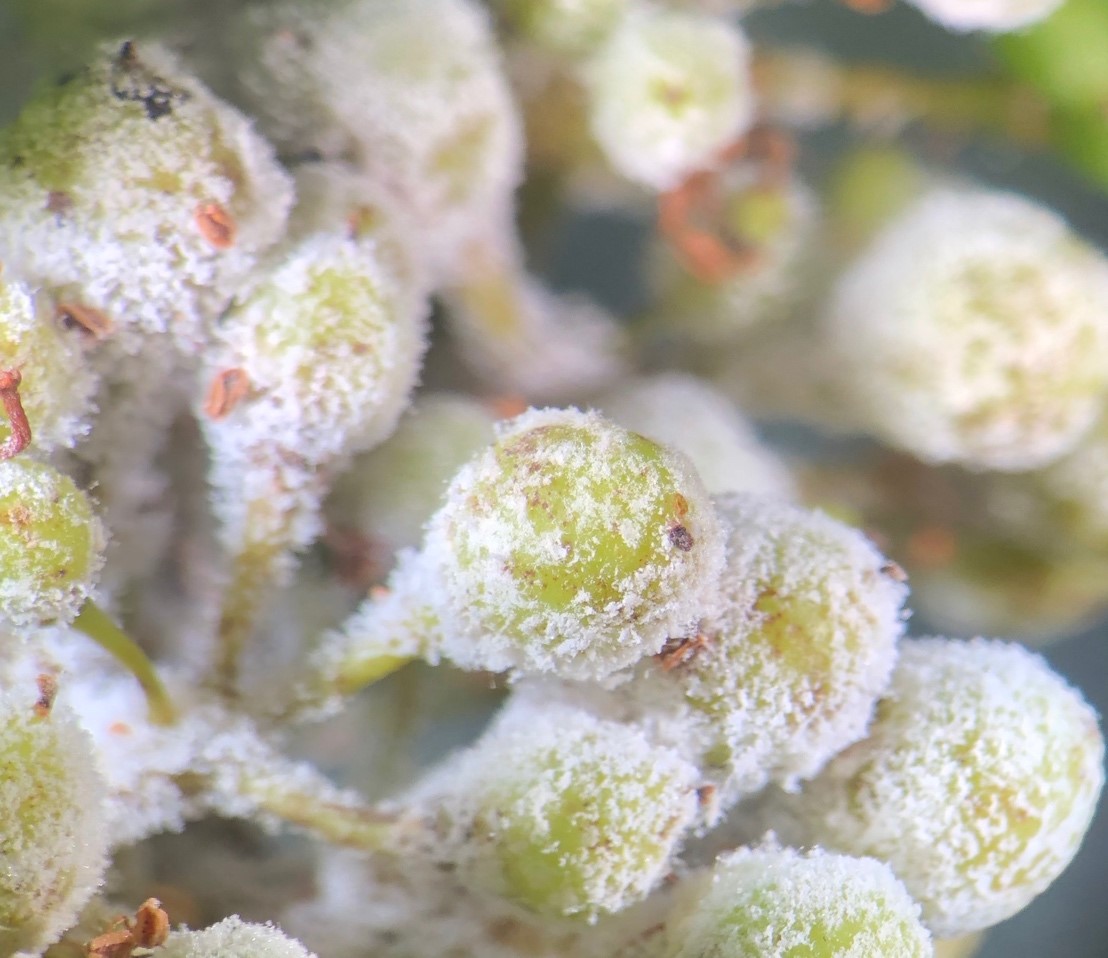
Several control cultural control strategies are available but anything that reduces pathogen inoculum will reduce the infection risk. Here is a list of fungicide applications to consider for downy mildew management listed alphabetically by trade name (active ingredient; FRAC code):
- Abound (azoxystrobin; 11)
- Copper hydroxide (M1)
- Lifegard (Bacillus mycoides isolate J)
- Phostrol (Phosphorous acid salts)
- Pristine 38WG (pyraclostrobin and boscalid; 11 and 7)
- Ranman (cyazofamid; 21)
- Revus (mandipropamid; 40)
- Revus Top (mandipropamid; 40 and difenoconazole; 3)
- Ridomil Gold Copper (mefenoxam and copper hydroxide; 4 and M1)
- Sovran 50WG (kresoxim-methyl; 11)
- Tanos (Famoxadone; 11 and Cymoxanil; 27)
For certain fungicides, precaution is advised on Concord grapes, as adjuvants or other components in the tank-mix may increase phytotoxicity potential (this has been particularly noted for fungicides like Revus Top). The risk of phytotoxicity may be enhanced during rapid plant growth and high temperatures.
This report and associated scouting is funded by a Michigan Craft Beverage Council grant and by MSU’s Project GREEEN. For more on MSU’s grape IPM information, visit MSU Extension’s Grape Pest Management page.



 Print
Print Email
Email










